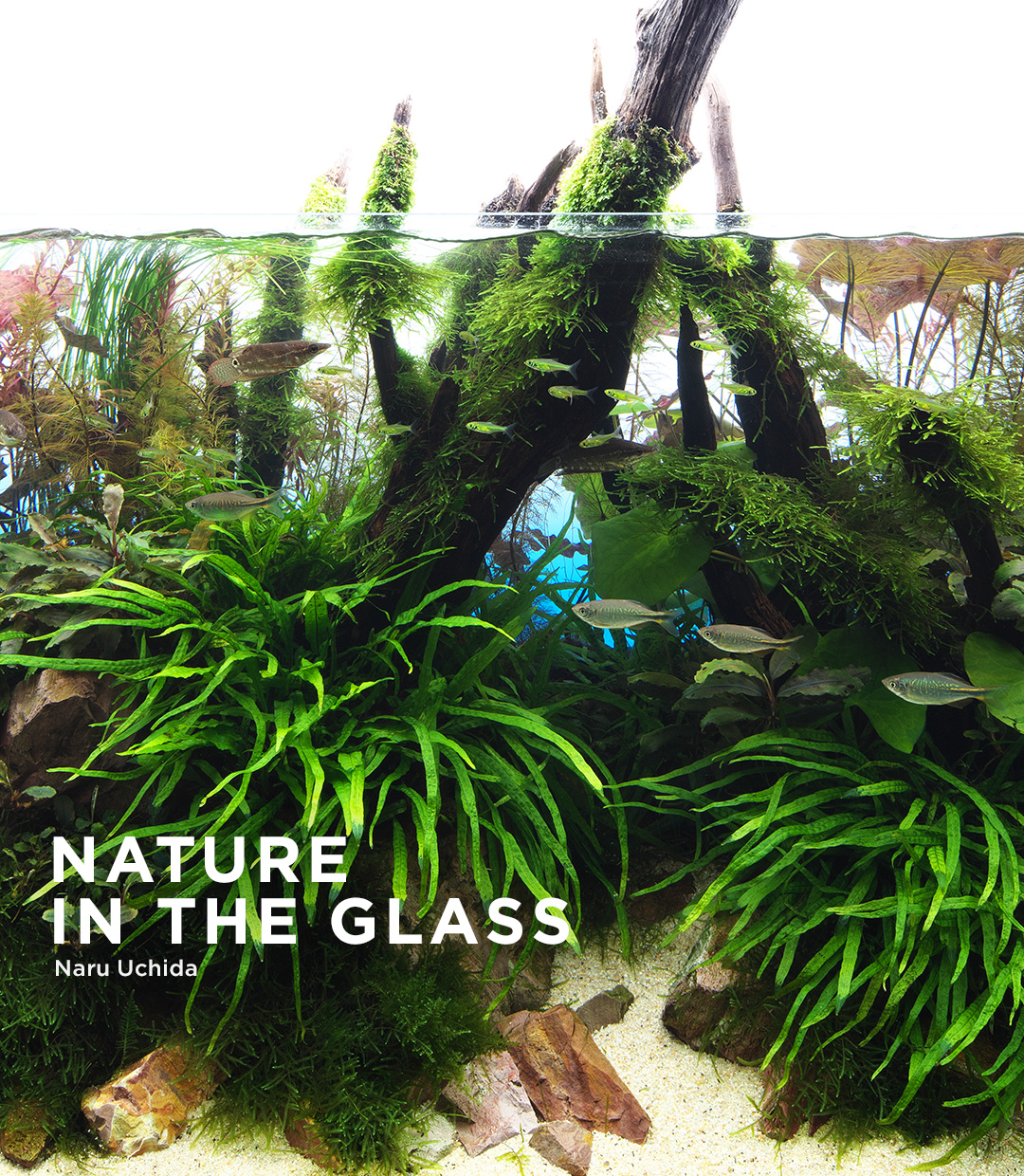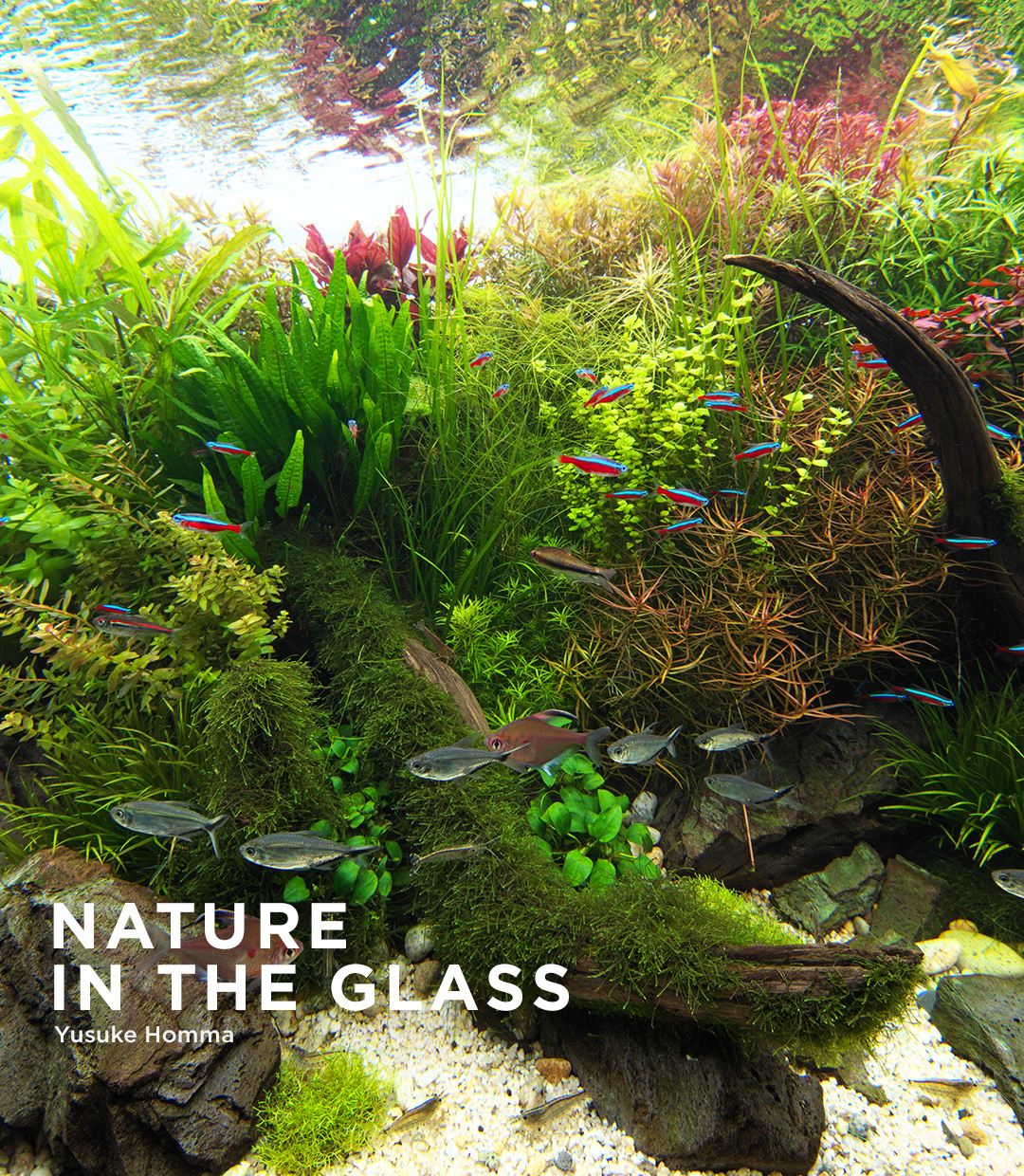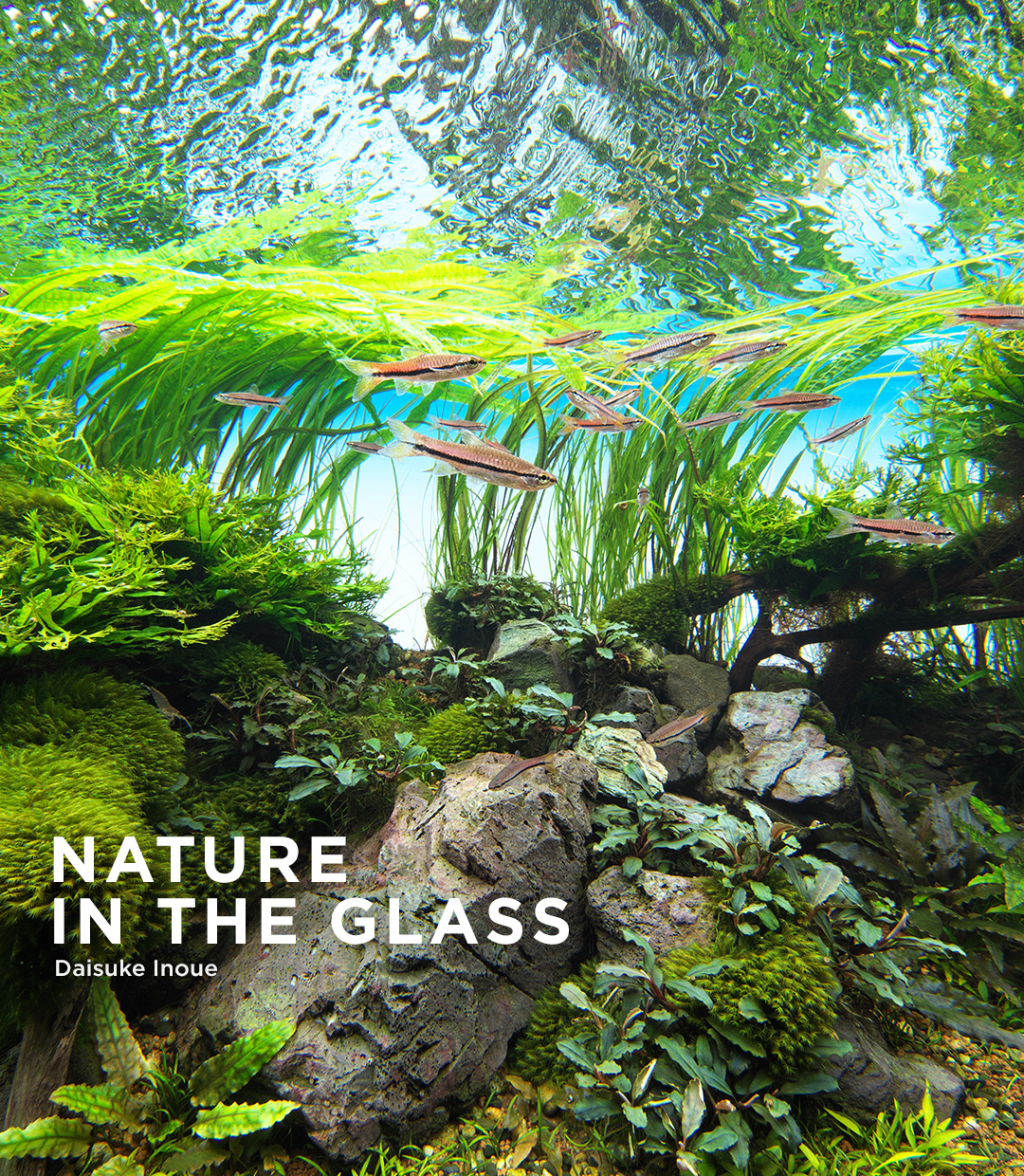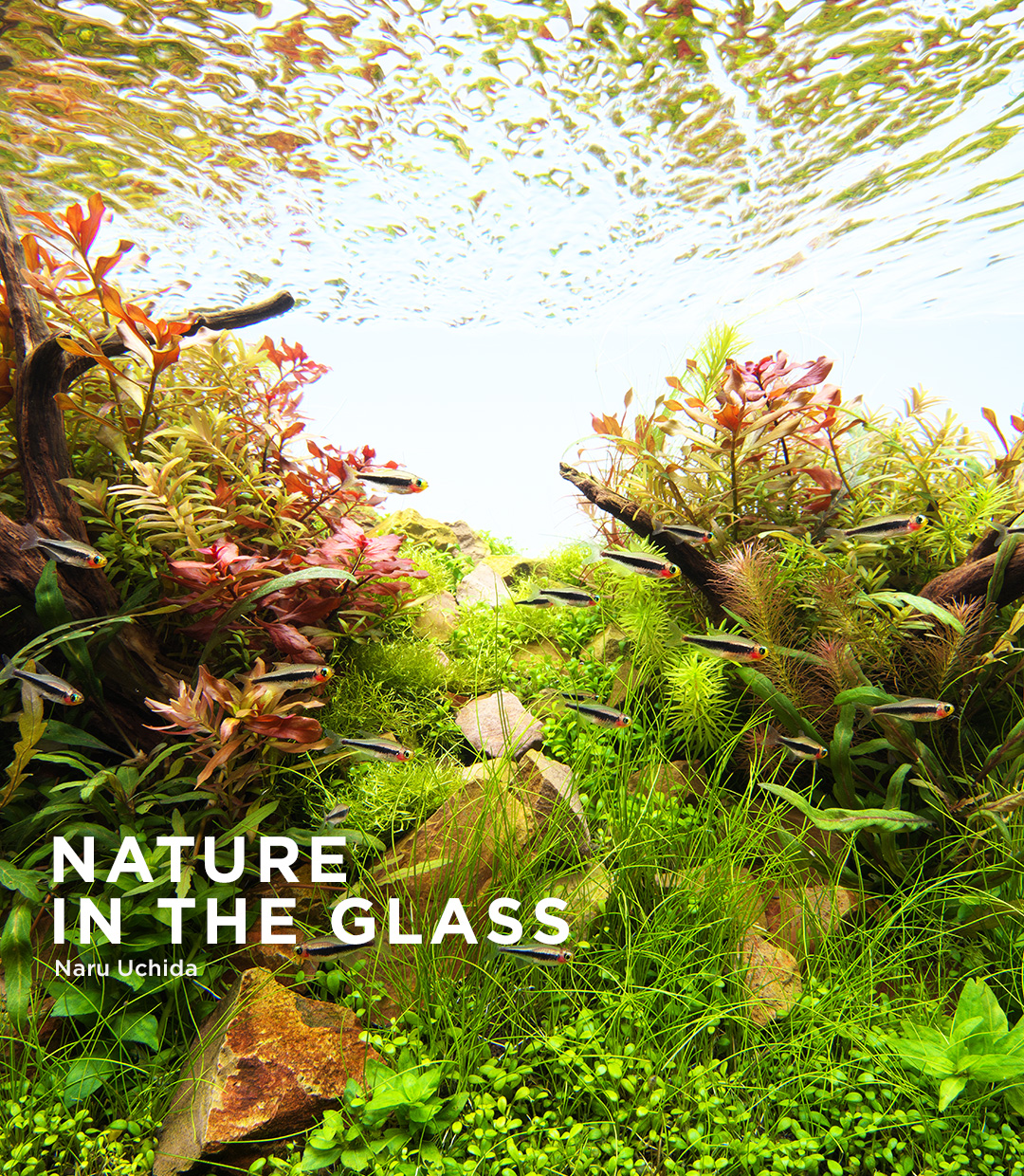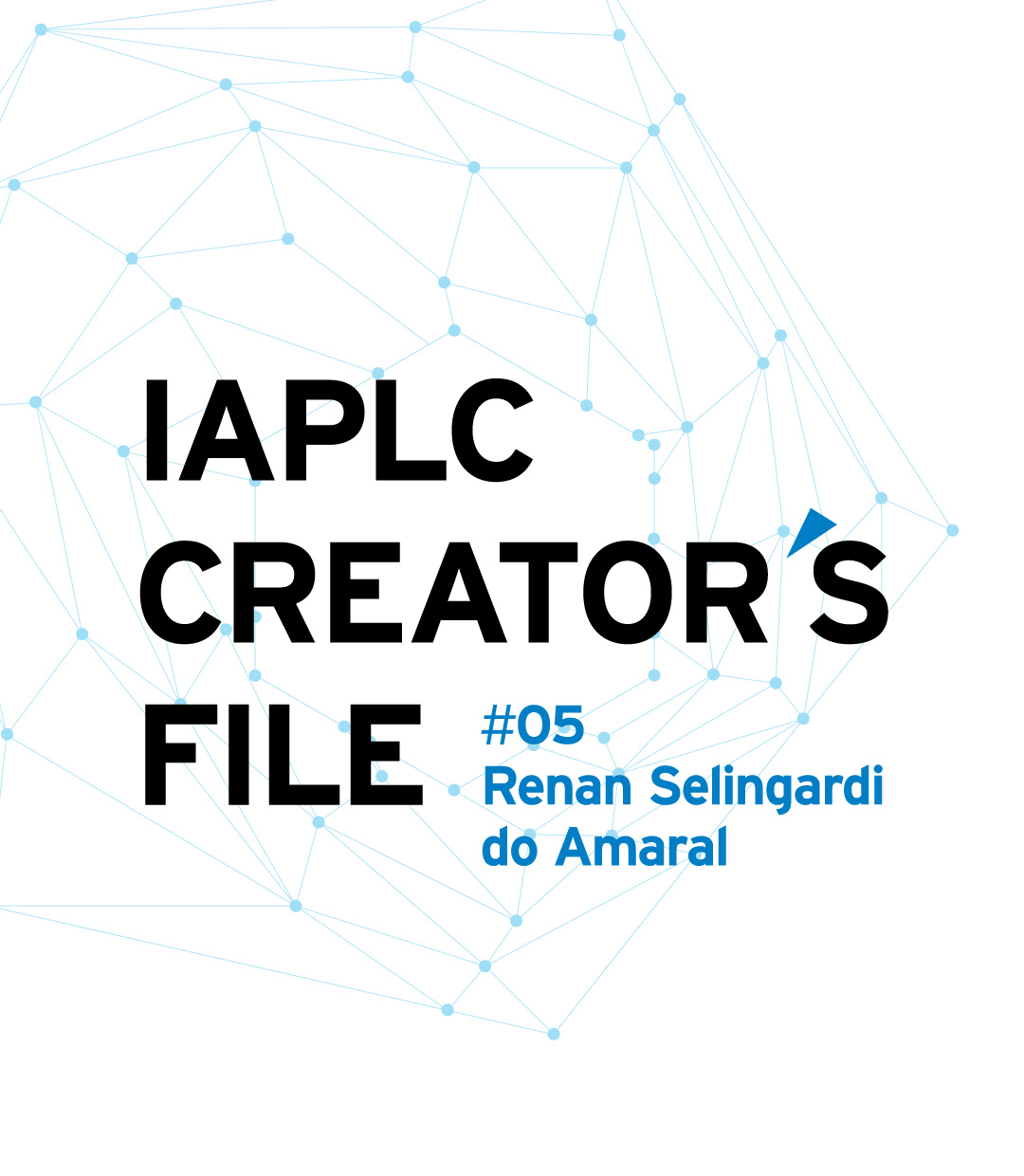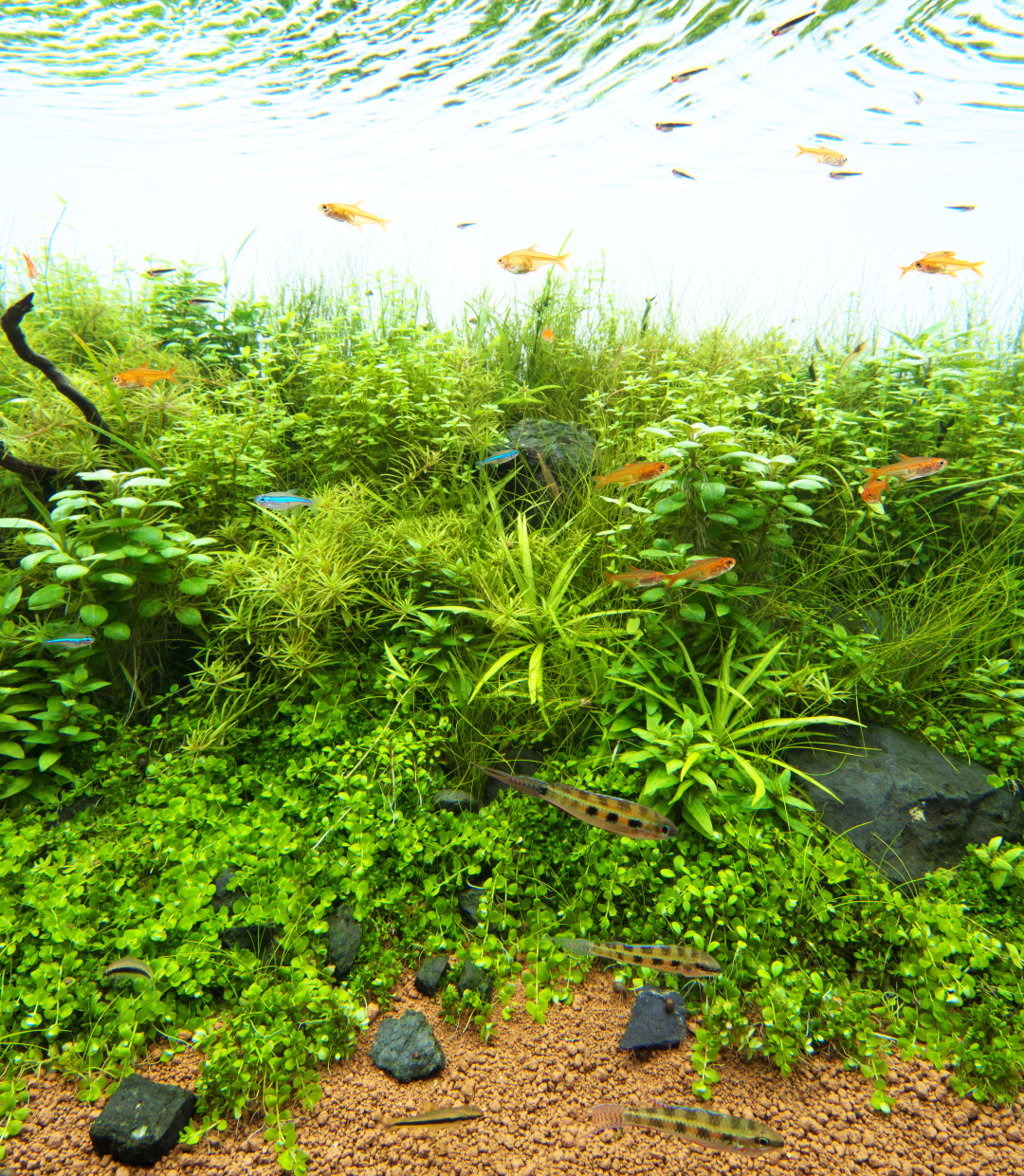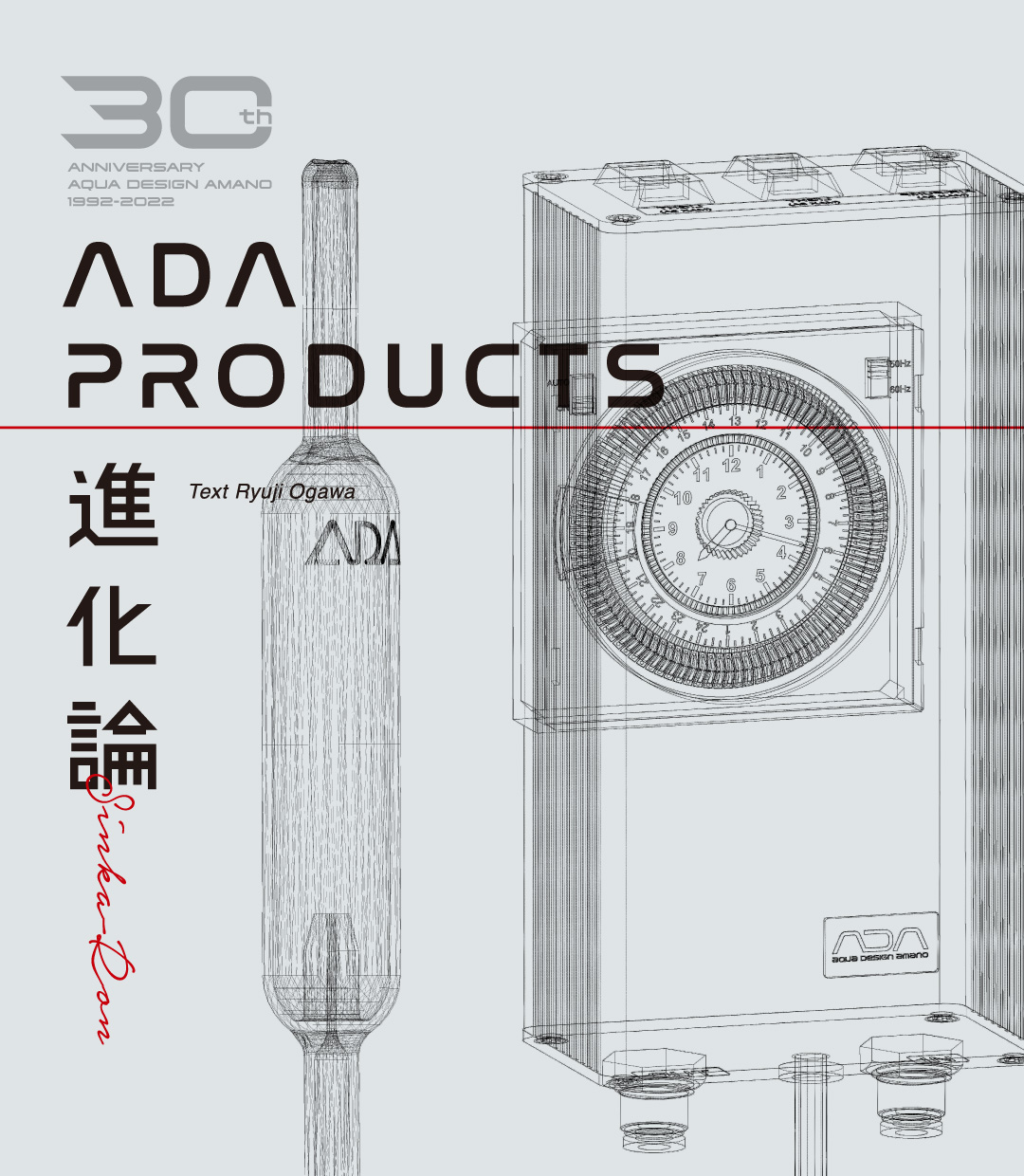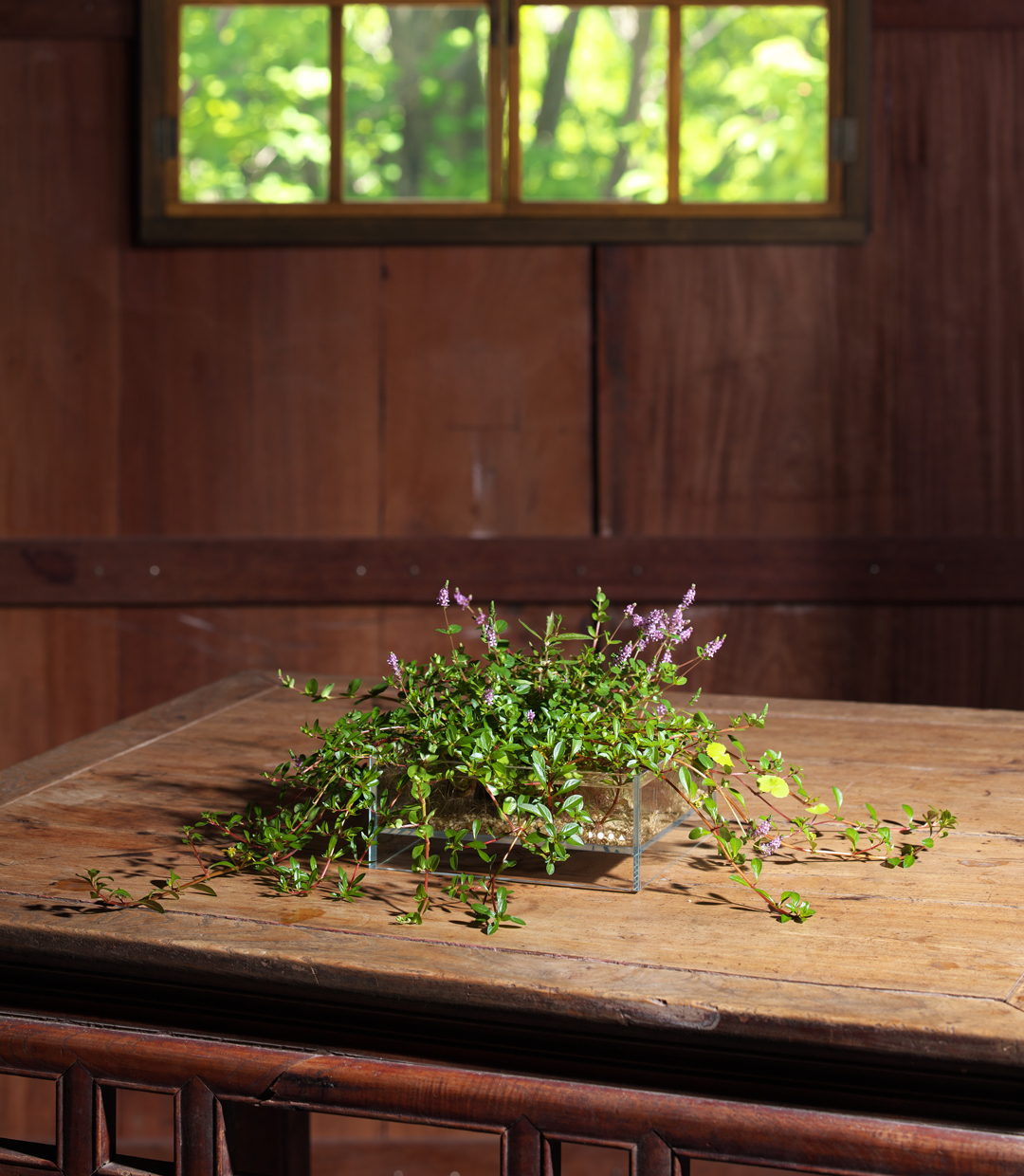NATURE IN THE GLASS “Over That Hill”
[Over That Hill]
This aquascape, which was exhibited at the ADA LAB GINZA last year, was created to propose to visitors as one of the layout styles incorporating ADA’s living products. To make it easier for visitors to feel the beauty of aquatic plants, so many sun-loving aquatic plants (heliophytes) such as stem plants and Riccia fluitans were planted.
This aquascape, which was exhibited at the ADA LAB GINZA last year, was created to propose to visitors as one of the layout styles incorporating ADA’s living products. To make it easier for visitors to feel the beauty of aquatic plants, so many sun-loving aquatic plants (heliophytes) such as stem plants and Riccia fluitans were planted.
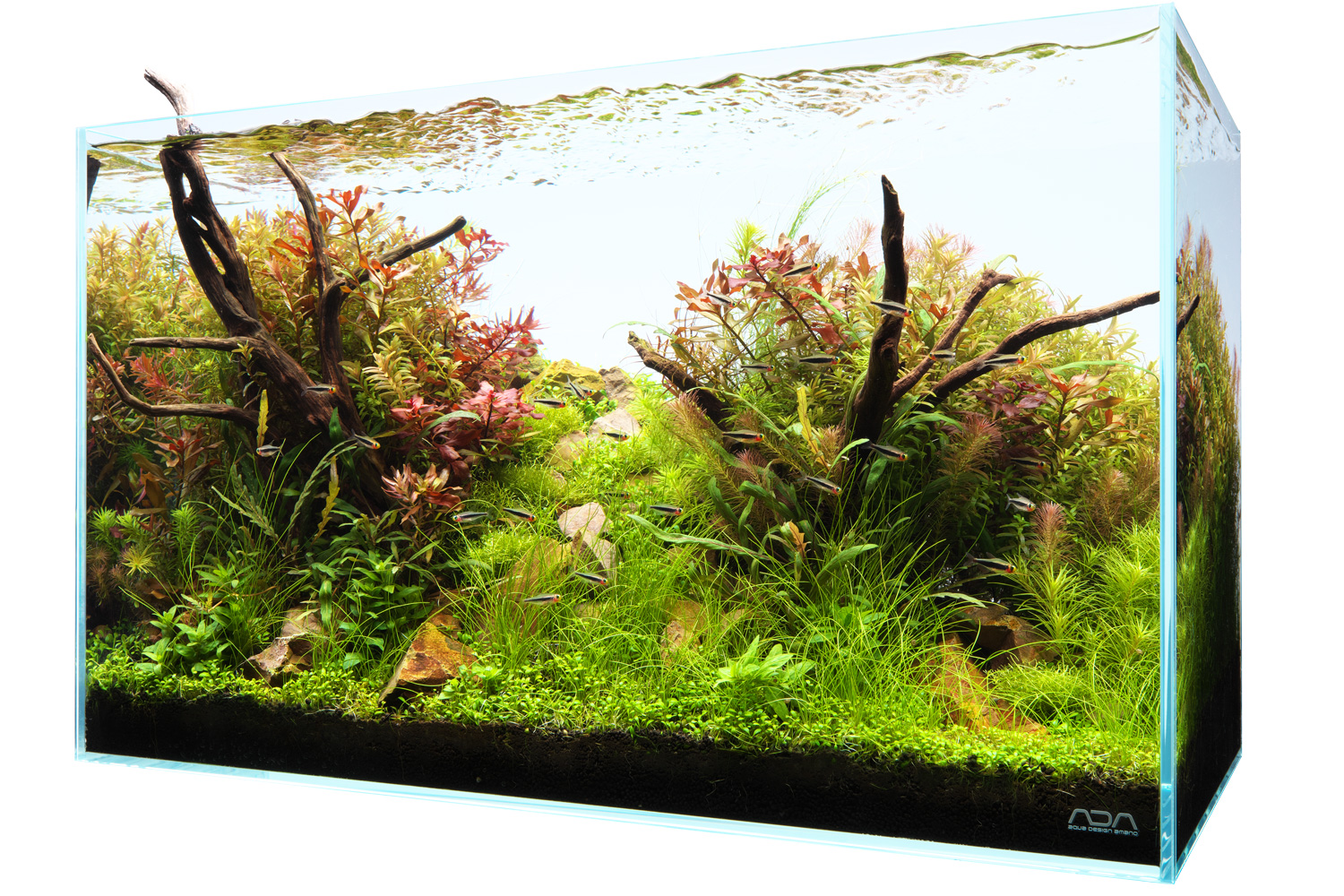
DATA
Photo taken on: April 1, 2022 (ADA)
Creator: Naru Uchida (layout production, text)
Aquarium: Cube Garden W90×D45×H45(cm)
Lighting: Solar RGB x 1 (8.5 hours per day)
Filtration: Super Jet Filter ES-600 (Bio Rio)
Materials: Slim Wood, Kei Stone
Substrate: Aqua Soil – Amazonia ver.2, Power Sand Advance S, Bacter 100,
Clear Super, Tourmaline BC
CO2: CO2 Pollen Glass, 2 bubbles per second via CO2 Bubble Counter (using Tower)
Aeration:15.5 hours after the light is turned off with Lily Pipe P-2 13Ø
Additives Brighty K, Green Brighty Mineral, Green Brighty Iron, Green Brighty Nitrogen
Water change: 1/2 once a week
Water quality: Temperature 25°C, pH: 6.2, TH: 50 mg/L
Plants
Riccia fluitans (BIO)*
Eleocharis acicularis (BIO)*
Glossostigma elatinoides (BIO)*
Helanthium tenellum (BIO)*
Staurogyne repens (BIO)*
Rotala rotundifolia ‘Ceylon’ (BIO)*
Rotala sp. ‘Vietnam’ (BIO)*
Rotala rotundifolia ‘Hra’ (BIO)*
Rotala nanjean (BIO)*
Rotala sp. ‘Bangladesh’ (BIO)*
Ludwigia arcuata (BIO)*
Ludwigia glandulosa
Ludwigia repens ‘Super Red’ (BIO)*
Hygrophila pinnatifida
Fish and Invertebrates
Tucanoichthys Tucano
Crossocheilus oblongus
Otocinclus sp.
Caridina multidentata
*means that they are from ADA’s living product lineups.
Photo taken on: April 1, 2022 (ADA)
Creator: Naru Uchida (layout production, text)
Aquarium: Cube Garden W90×D45×H45(cm)
Lighting: Solar RGB x 1 (8.5 hours per day)
Filtration: Super Jet Filter ES-600 (Bio Rio)
Materials: Slim Wood, Kei Stone
Substrate: Aqua Soil – Amazonia ver.2, Power Sand Advance S, Bacter 100,
Clear Super, Tourmaline BC
CO2: CO2 Pollen Glass, 2 bubbles per second via CO2 Bubble Counter (using Tower)
Aeration:15.5 hours after the light is turned off with Lily Pipe P-2 13Ø
Additives Brighty K, Green Brighty Mineral, Green Brighty Iron, Green Brighty Nitrogen
Water change: 1/2 once a week
Water quality: Temperature 25°C, pH: 6.2, TH: 50 mg/L
Plants
Riccia fluitans (BIO)*
Eleocharis acicularis (BIO)*
Glossostigma elatinoides (BIO)*
Helanthium tenellum (BIO)*
Staurogyne repens (BIO)*
Rotala rotundifolia ‘Ceylon’ (BIO)*
Rotala sp. ‘Vietnam’ (BIO)*
Rotala rotundifolia ‘Hra’ (BIO)*
Rotala nanjean (BIO)*
Rotala sp. ‘Bangladesh’ (BIO)*
Ludwigia arcuata (BIO)*
Ludwigia glandulosa
Ludwigia repens ‘Super Red’ (BIO)*
Hygrophila pinnatifida
Fish and Invertebrates
Tucanoichthys Tucano
Crossocheilus oblongus
Otocinclus sp.
Caridina multidentata
*means that they are from ADA’s living product lineups.
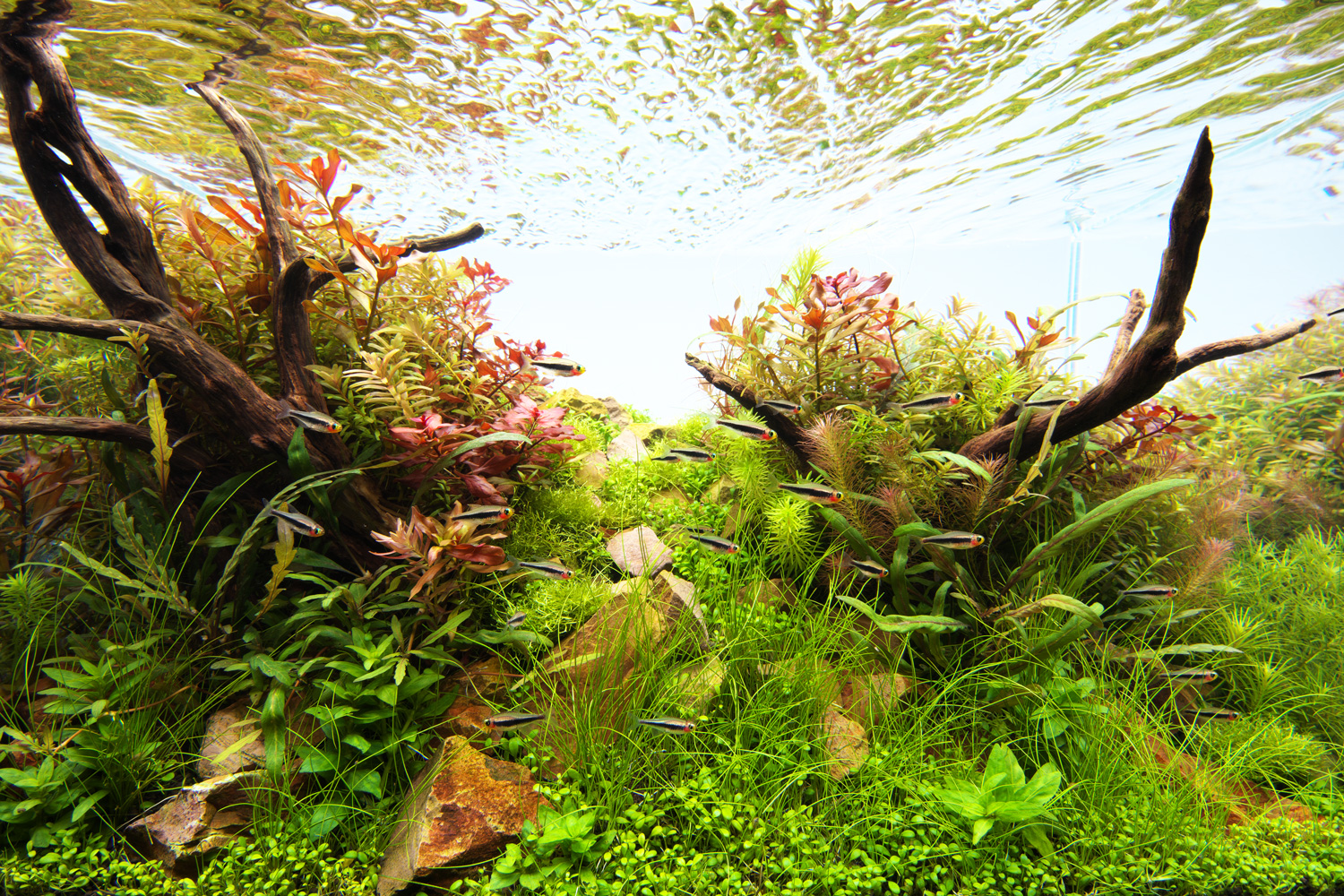
Natural feeling created by mixing sun-loving aquatic plants (heliophytes) and undergrowth.
By using only sun-loving plants from the background plants to the undergrowth, a colorful aquascape was created in which the beauty of the aquatic plants can be appreciated. The undergrowth is a mixture of approximately five different plants including Riccia fluitans and Staurogyne repens. These aquatic plants were not clearly separated when planted, but rather were mixed together to enhance the natural feeling by utilizing the differences in the shapes and colors of their leaves.
By using only sun-loving plants from the background plants to the undergrowth, a colorful aquascape was created in which the beauty of the aquatic plants can be appreciated. The undergrowth is a mixture of approximately five different plants including Riccia fluitans and Staurogyne repens. These aquatic plants were not clearly separated when planted, but rather were mixed together to enhance the natural feeling by utilizing the differences in the shapes and colors of their leaves.
Undergrowth
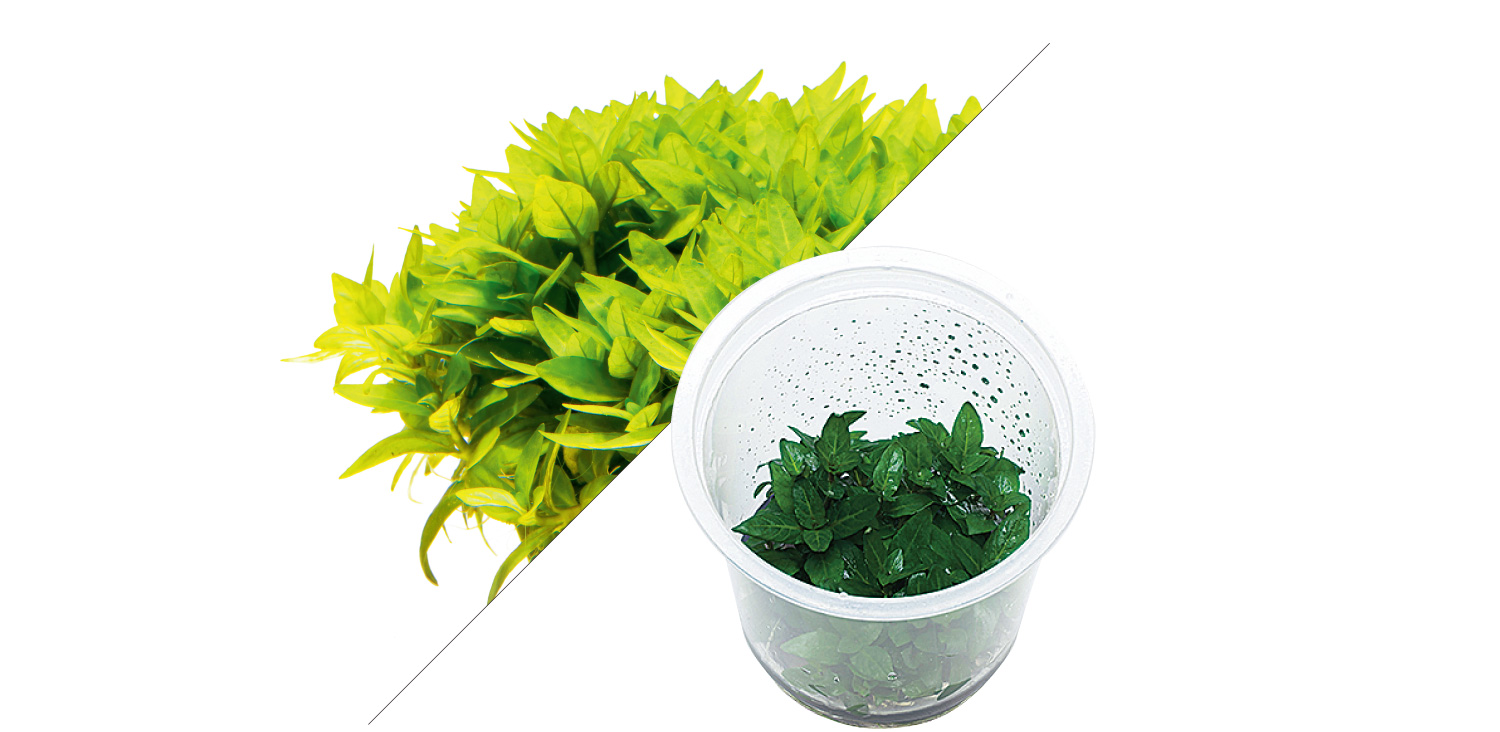
Staurogyne repens
Distribution: South America
Grows slowly without increasing in size, making it easy to use in the foreground to middle ground. With the addition of sufficient nutrients, it spreads bright green foliage.
Distribution: South America
Grows slowly without increasing in size, making it easy to use in the foreground to middle ground. With the addition of sufficient nutrients, it spreads bright green foliage.
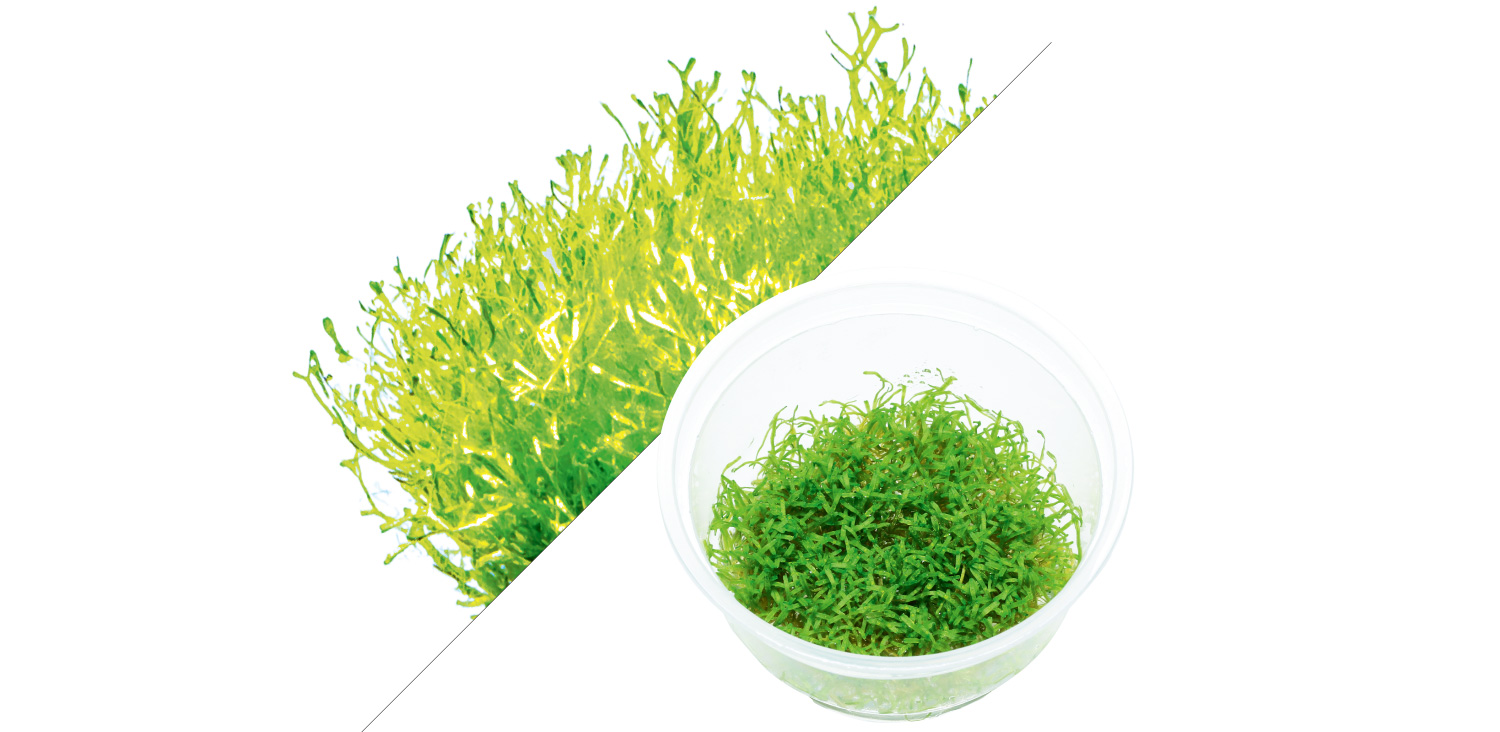
Riccia fluitans
Distribution: Worldwide
Enabling us to observe oxygen from photosynthesis easily is a unique attraction of aquatic plants, but Riccia fluitans is exceptional. In the water, it can be used by fixing it to pebbles.
Distribution: Worldwide
Enabling us to observe oxygen from photosynthesis easily is a unique attraction of aquatic plants, but Riccia fluitans is exceptional. In the water, it can be used by fixing it to pebbles.
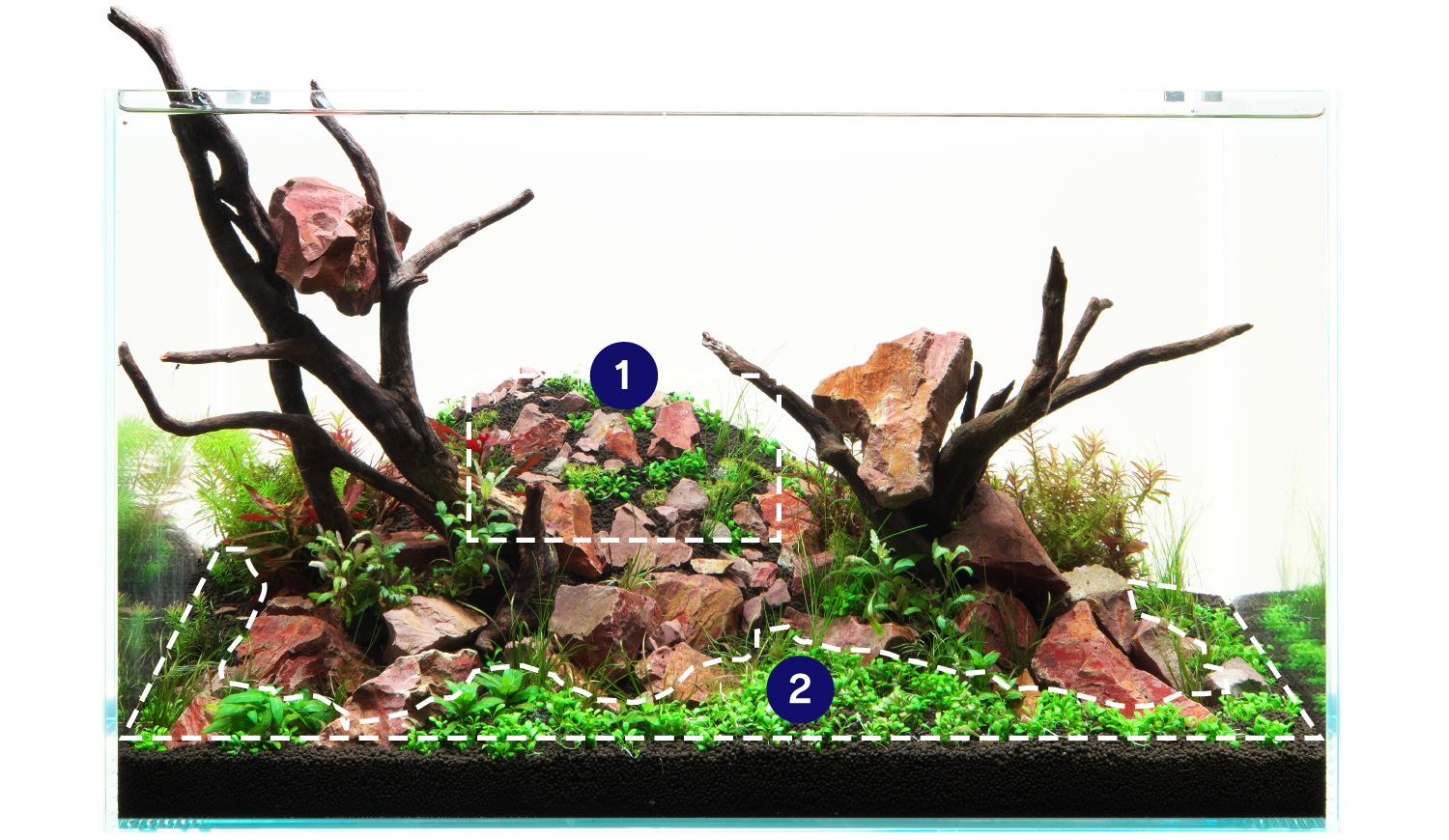
Photographed on January 11, 2022
Mounding while having a completed layout in mind and expressing a sense of perspective by arranging stones
The mound in the center not only extends the area of undergrowth, but also raises the vanishing point between the colonies of stem plants, which naturally brings the distance between the undergrowth and the background plants closer, enhancing the three-dimensional effect. The stones are arranged to be larger in the foreground and smaller in the background to create a sense of perspective.
The mound in the center not only extends the area of undergrowth, but also raises the vanishing point between the colonies of stem plants, which naturally brings the distance between the undergrowth and the background plants closer, enhancing the three-dimensional effect. The stones are arranged to be larger in the foreground and smaller in the background to create a sense of perspective.
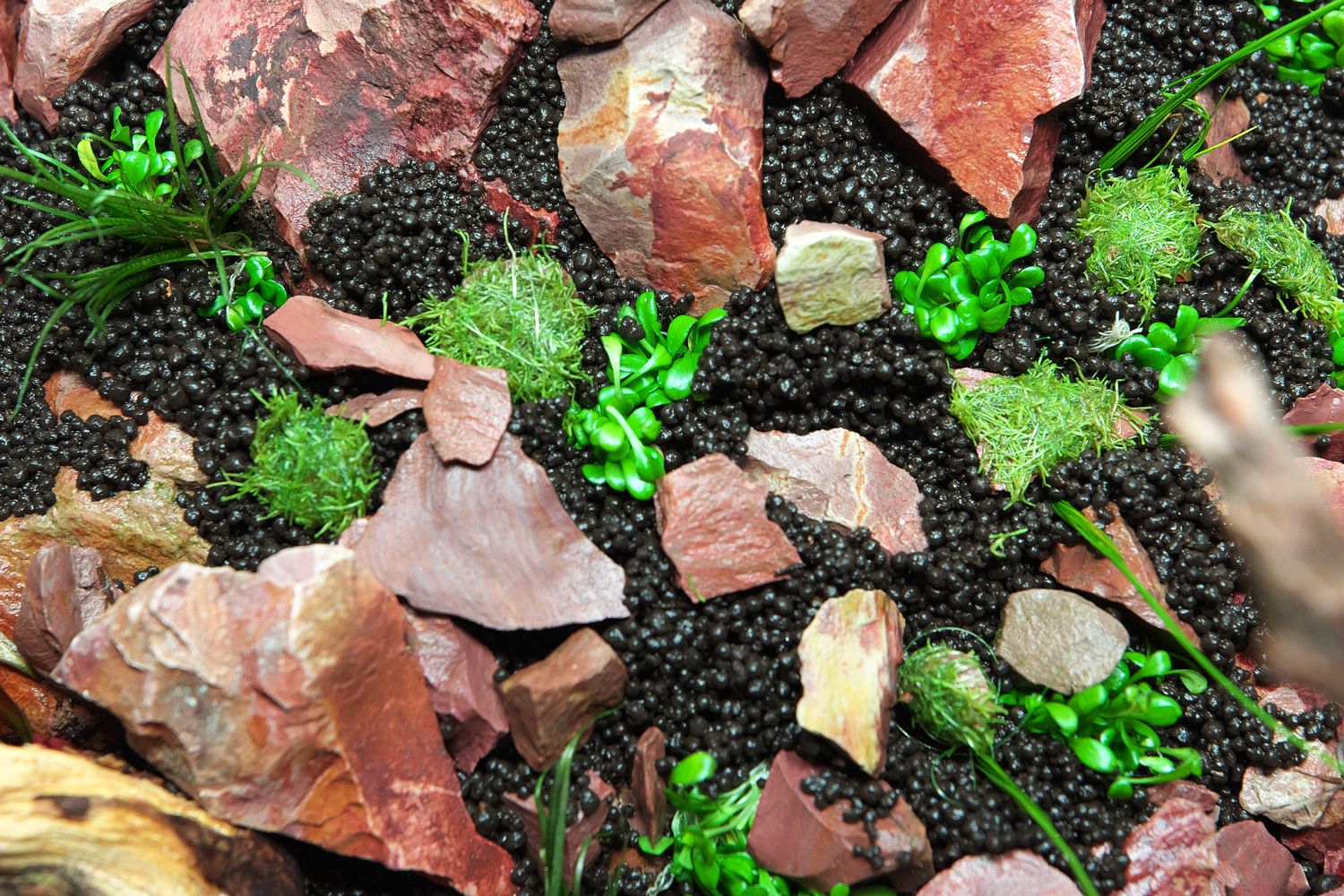
Point 1 Mixed arrangement of stones and undergrowth
By planting undergrowth between the stones that were placed to fix the substrate, it became an aquascape where the Kei Stones could be seen and hidden among the undergrowth.
By planting undergrowth between the stones that were placed to fix the substrate, it became an aquascape where the Kei Stones could be seen and hidden among the undergrowth.
Point 2 Undergrowth is also planted in addition to the foreground area.
In the back right and under the center of the mound, Glossostigma elatinoides and Riccia fluitans were also planted as undergrowth. The combination of the undergrowth and the color of the bushes composed of stem plants created a colorful aquascape.
In the back right and under the center of the mound, Glossostigma elatinoides and Riccia fluitans were also planted as undergrowth. The combination of the undergrowth and the color of the bushes composed of stem plants created a colorful aquascape.
![[ STYLE OF EPIPHYTIC PLANTS ] Effective use of epiphytic aquatic plants in layout scenes](https://www.adana.co.jp/wp-content/uploads/sites/3/2024/04/ep_img_ogp.jpg)
